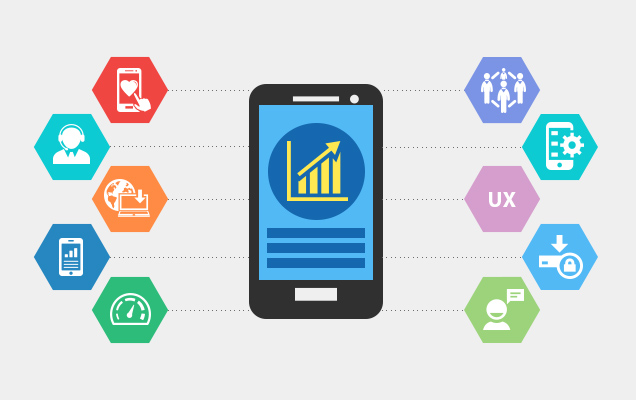Creating a mobile app is not rocket science; however, creating a successful app that works seamlessly in all the context is what matters the most. We are living in an era of high technology, and the benefit of this technology is all around us. Technology is helping businesses and enterprises to get a fair share of advantages and profits in our business. And, mobile app development is the only way by which you can get all these benefits and perks, and can take your business to the next level.
The app development company is evolving at an alarming rate. With the discovery of new mobile devices and OS, it has now become essential for small to medium-sized and large businesses to know what it takes to execute and build apps that exhibit their products and services. Though building a mobile business app is an easy task, but if you are looking at your app as a means for your company growth, then it’s crucial to understand the mobile app development process, and also how your app will get fit on your market niche and marketing goals.
While there are different phases involved in the mobile app development lifecycle, so, we have curated the list of essential stages of developing mobile apps and arrange these processes out one by one.
Here is a brief on all these processes
Planning and Research: Planning and research are the two most important aspects of every development. All apps start with a unique idea. It’s essential to ask every information about your client’s business and understand his expectations from the app. Start with initial analysis such as motivation, goals of your end-users, behavior pattern, and actual demographics. Before going ahead directly to the next phase, do your bit of abundant research and brainstorming.
Also, don’t forget to analyze the competition as this is another essential part of this phase. This will help you to figure out what features your business competitors’ are lacking in their application. Therefore you could add those features in your app to get an edge over others in the market.
Execution: After analyzing and market research, another essential step is execution. Take a paper and put your idea down on paper to give an execution path to your plan. Further, share it with your potential customers and take their feedback. In case of any bugs and mistakes, try to fix them out ASAP. All fundamental operations shall be completed at this phase. Effective and powerful planning will help you in understanding the perspective of your end-users and also will estimate the associated risk in the project.
Technical Specifications: Make sure that the app is technically feasible, which means the back-end system should support the app’s functionality. To determine the app is technically workable or not, you need to access public data by sourcing Public APIs. Different platforms will have different technical requirements and specifications. Knowing whether the app has technical feasibility will spare your time in designing a prototype of your app.
Designing Prototype: Building a prototype of your app is an essential stage. UI/UX plays a critical role in designing. While User Experience determines the usability, accessibility, and functionality of your app, the UI includes all the features through which users interact with the app. Designing UX helps in giving a rough idea regarding the functioning and looks of the app based on the selected operating system.
Design your app based on your end-users using the functionality that perfectly suits them.
Development: The next step after prototyping is app development. All the complexities and difficulties regarding building an app are involved in this section. This phase includes coding and programming, which is one of the essential aspects. The programming phase needs all the attention to develop bug-free applications. For the developers, choosing the best programming language is the primary concern.
App Testing and Debugging: Testing and Debugging are the two main aspects that need to be carried out finely & perfectly. Testing is regarded as one of the critical steps in the mobile app development lifecycle. Testing helps you to find out software bugs and errors in the program code. So, that you can fix them in the program code ASAP. Different techniques are available for testing- Beta testing and User Acceptance, etc.
Launch & Maintenance: After accomplishing all the above stages, now the last and foremost step is launching and maintenance of the application. Now, the product is ready to be deployed in the market. Keep in mind, the guidelines for launching an application on each app store is different. Before you launch the application, make sure you have read all the necessary guidance to live the app on the app stores.
Well, the mobile app development lifecycle doesn’t end with your app being released in the market. Maintenance of an app is essential to monitor the application once in a month.
Final Words
In this blog, we have listed different steps to understand the life cycle of mobile app development. The development of a mobile app is considered a tough task when it comes to building a successful app that featured in the app store. Because it comprises of many technical complications and programs. But, the following step-by-step approach always helps in achieving the goal.
If you are looking for the top mobile app development company that develops impactful application by following the necessary app development lifecycle, then keep in touch with us.


